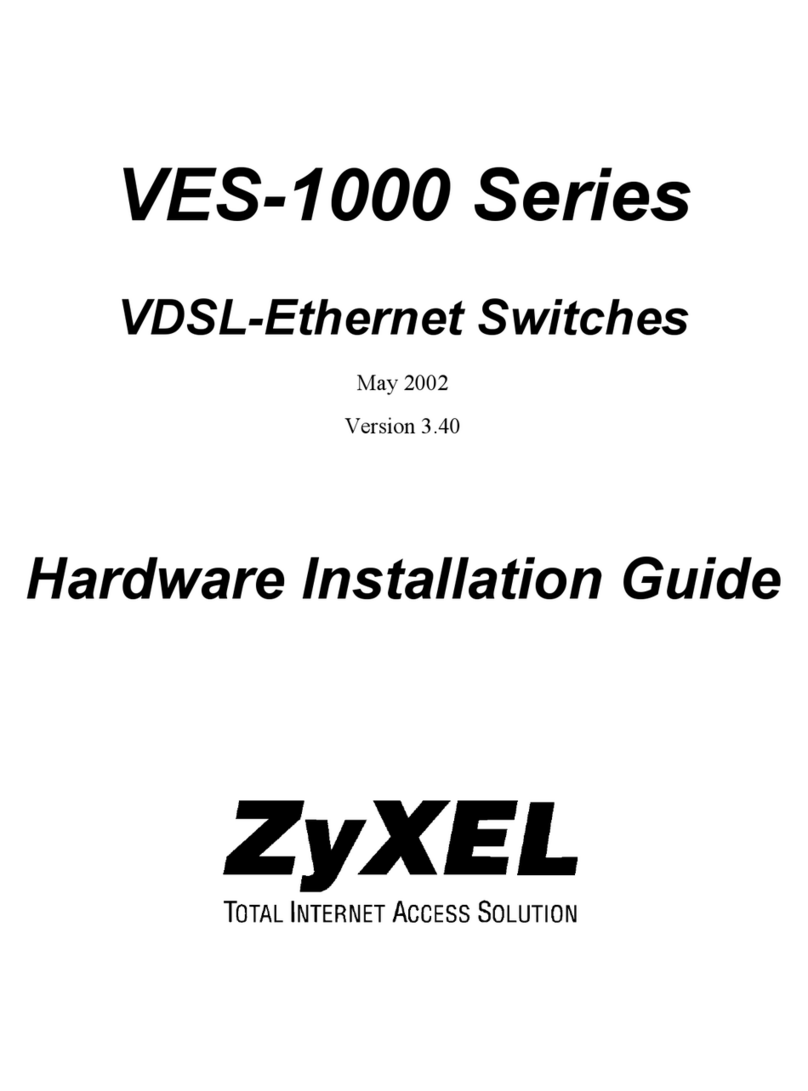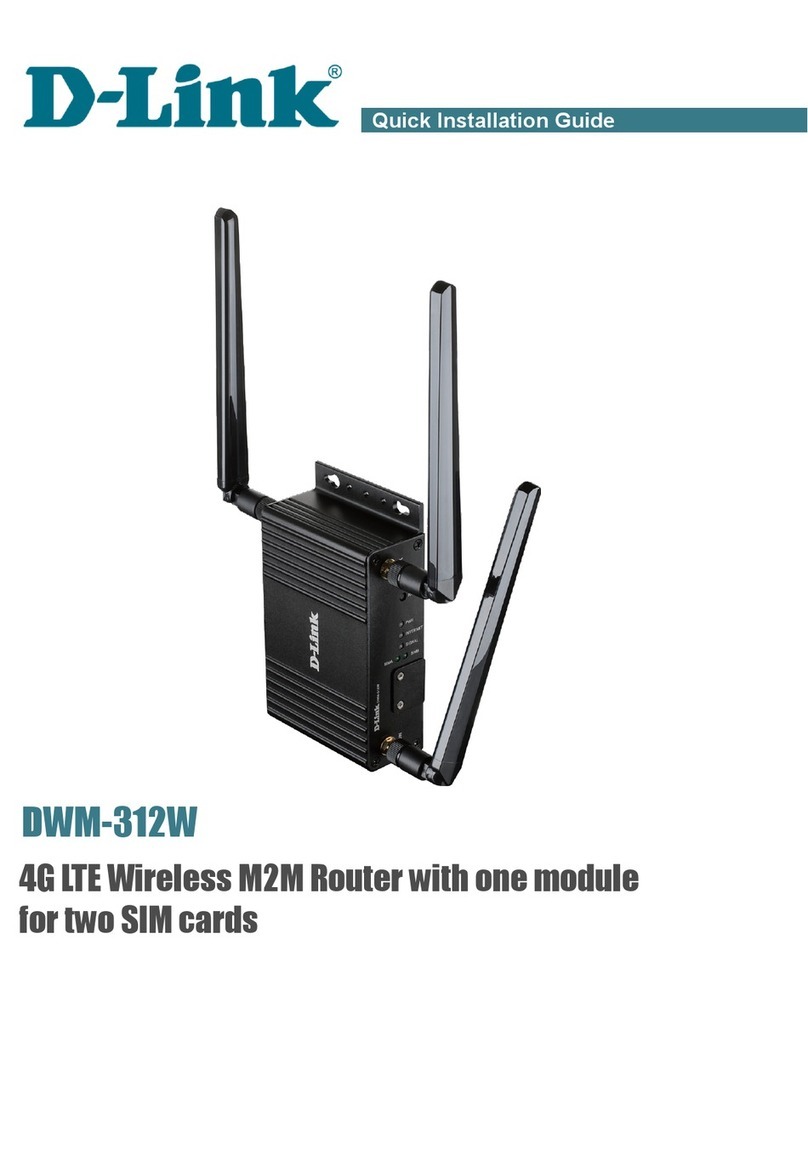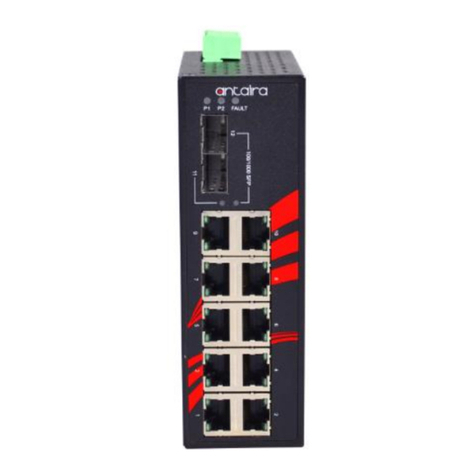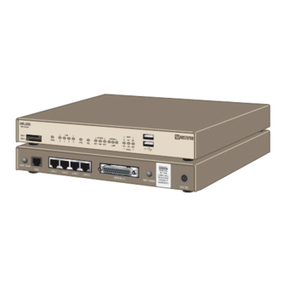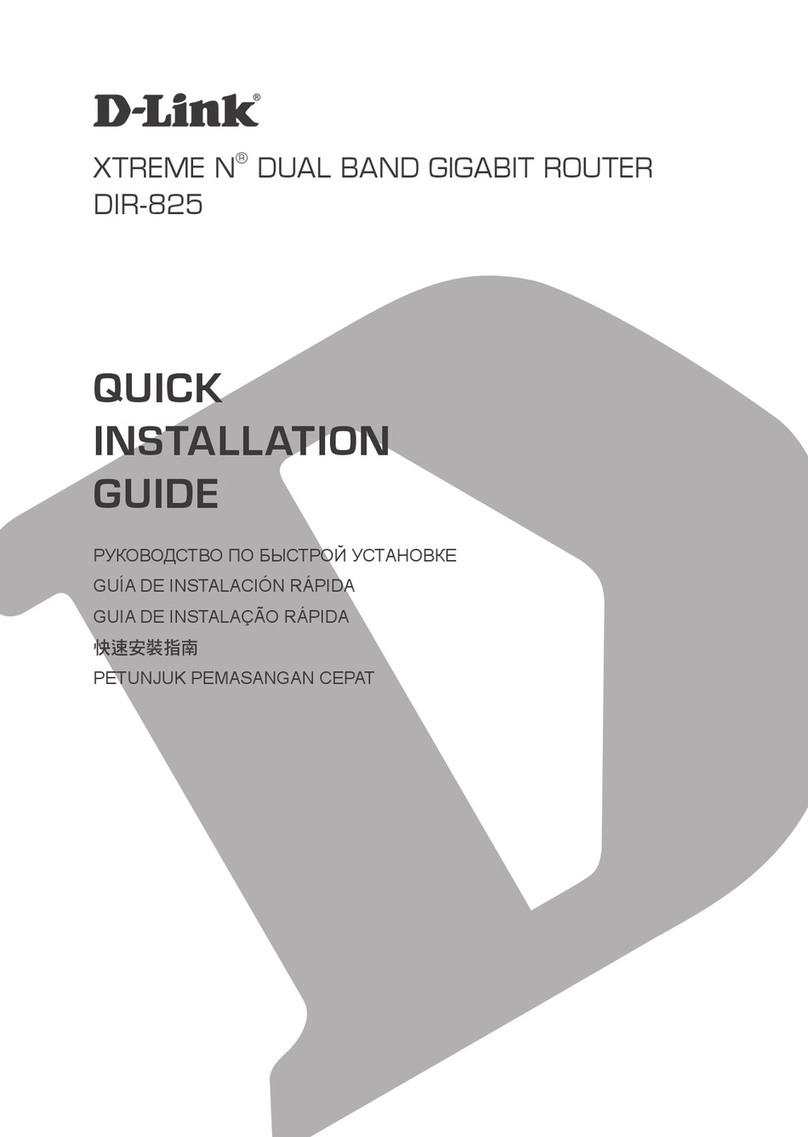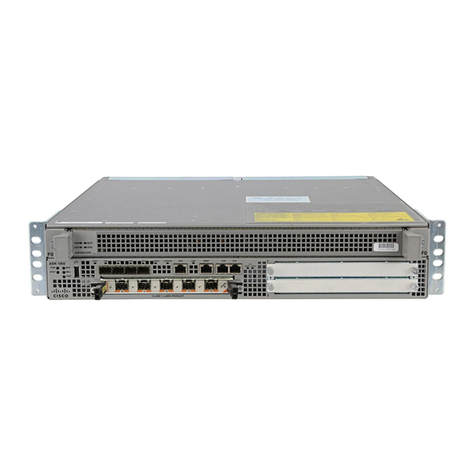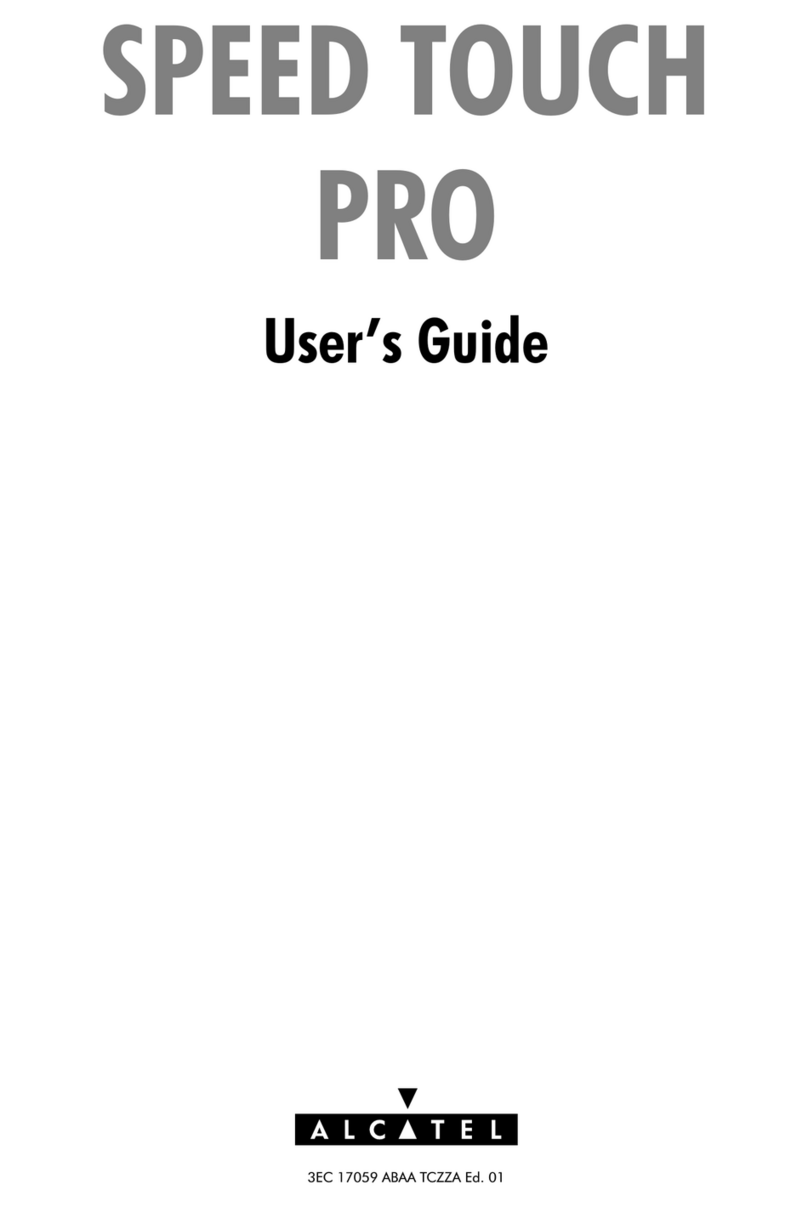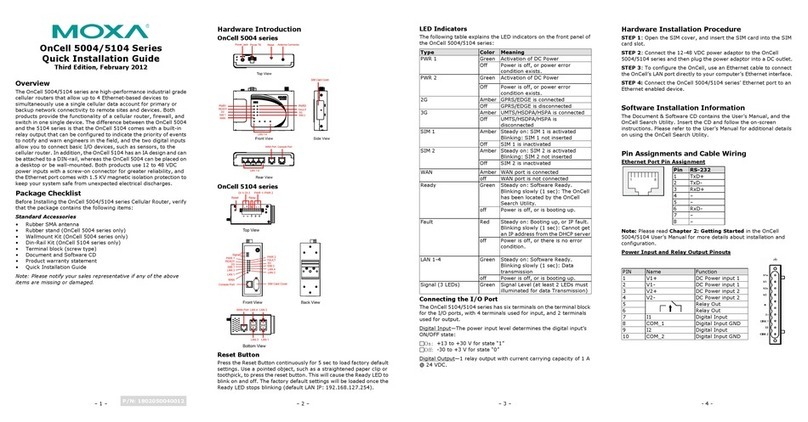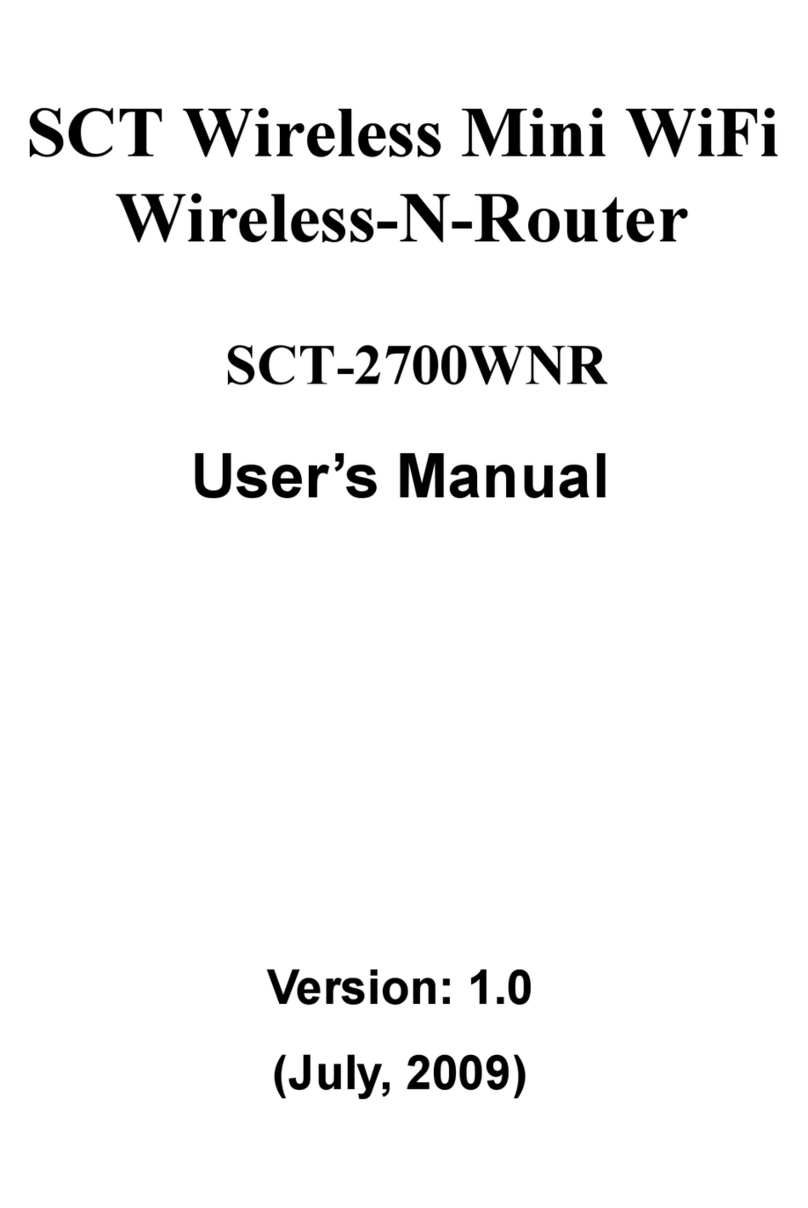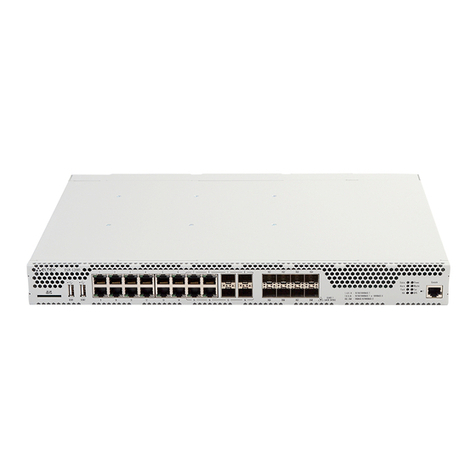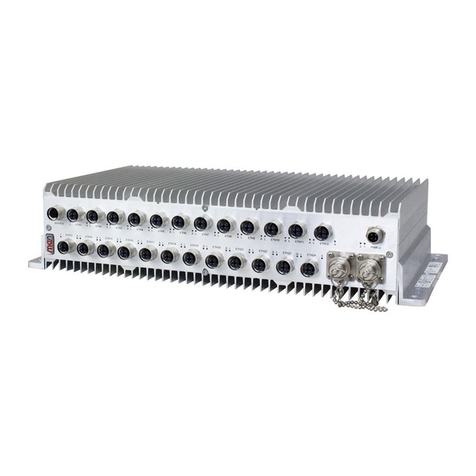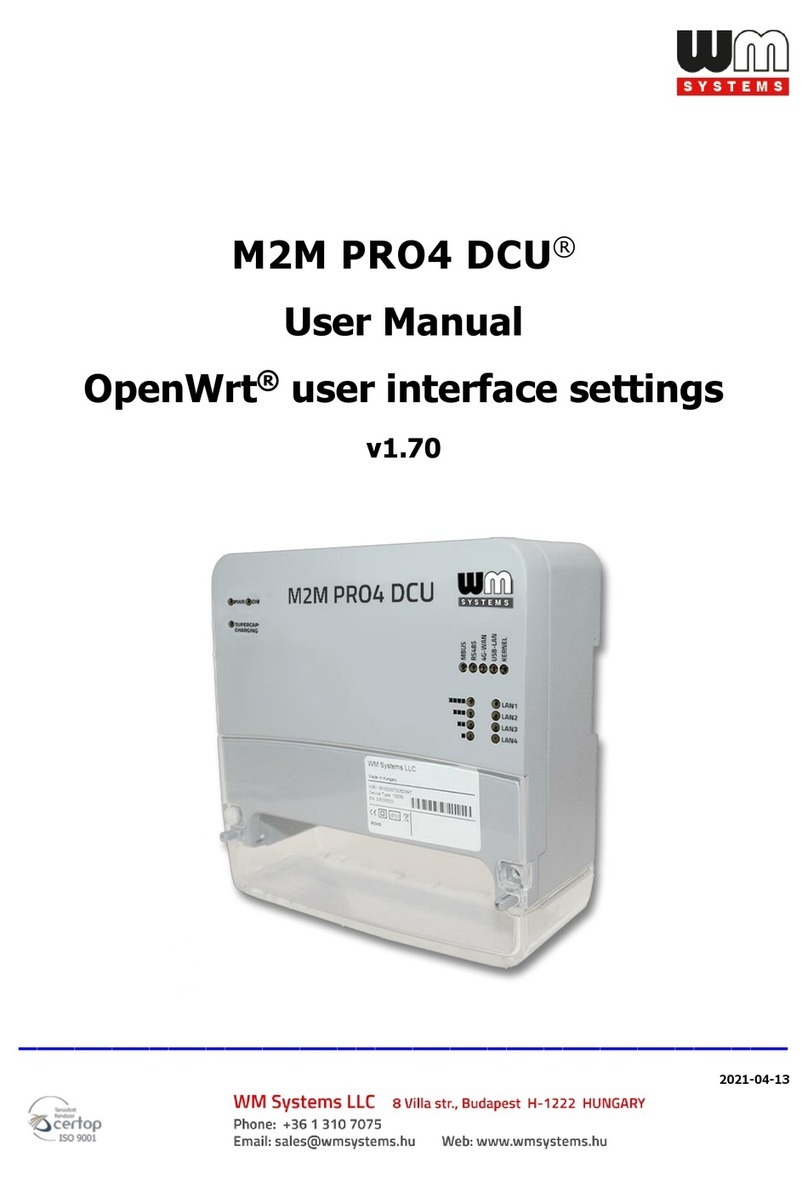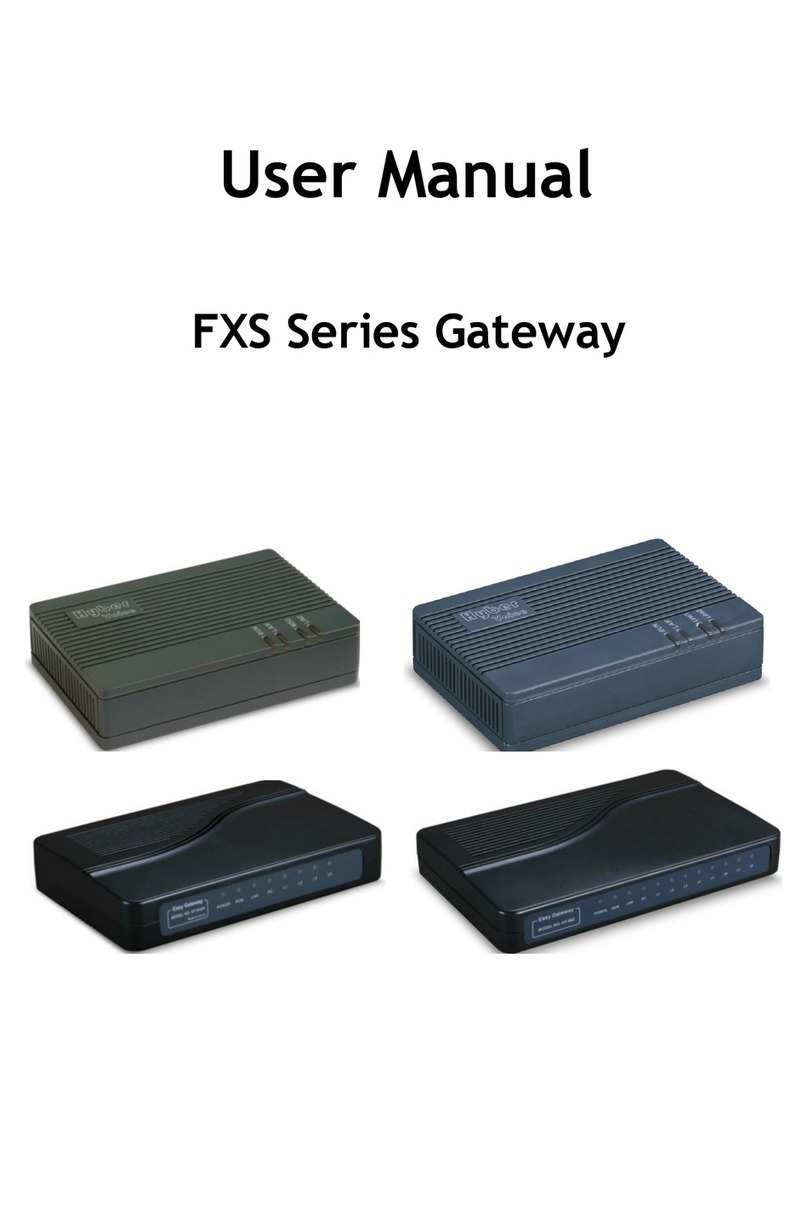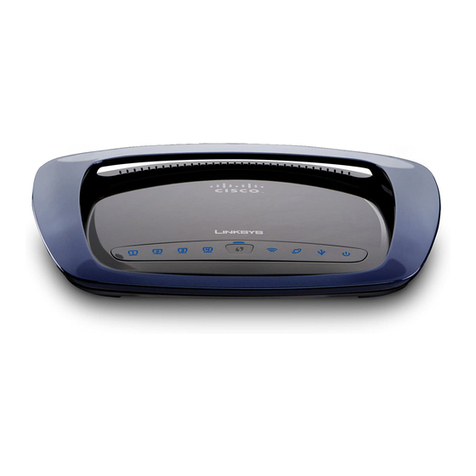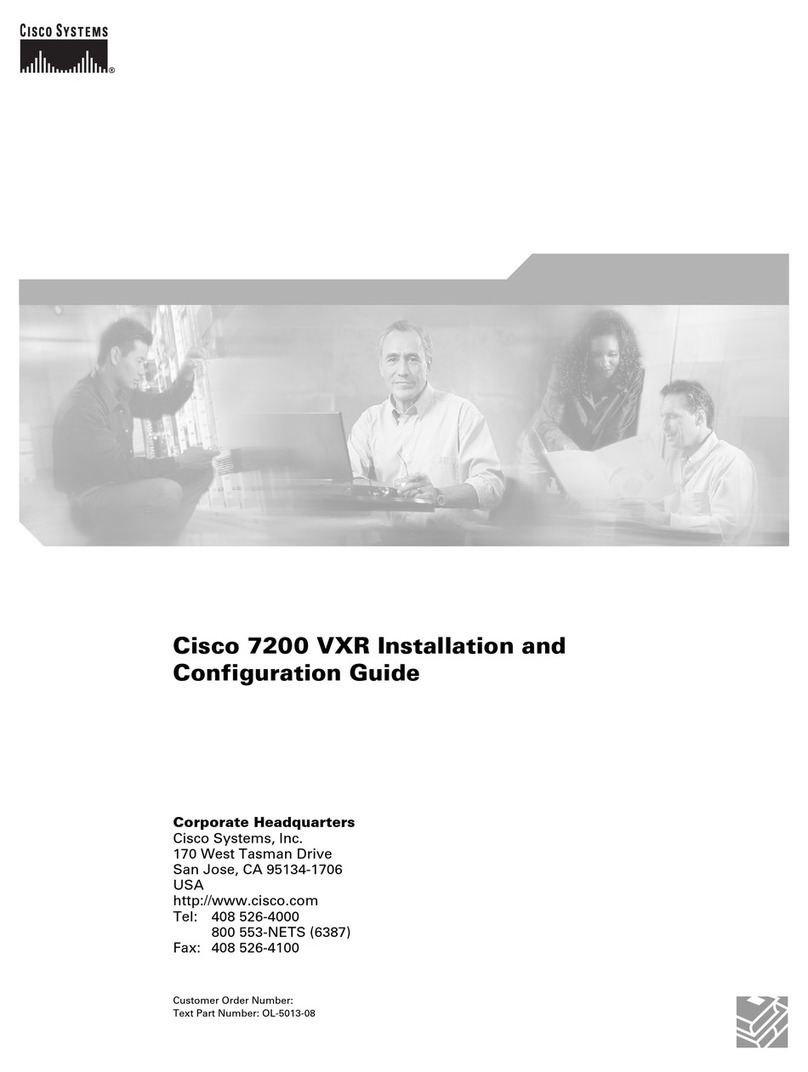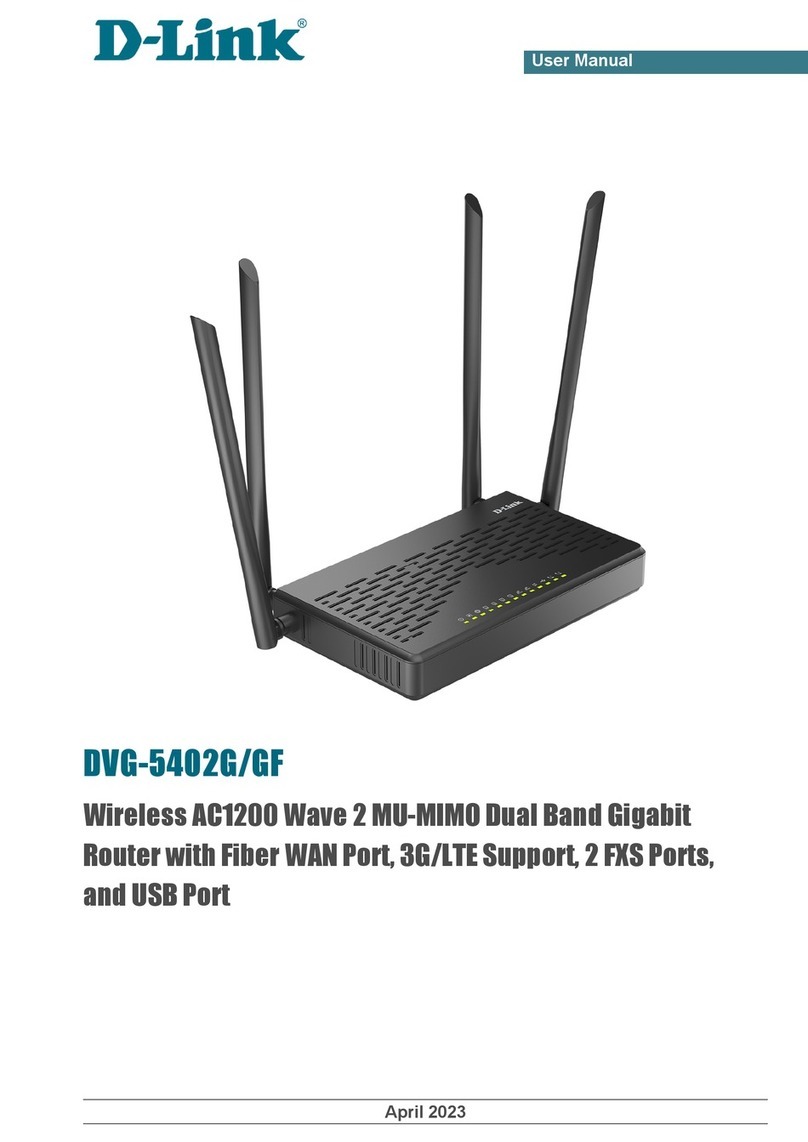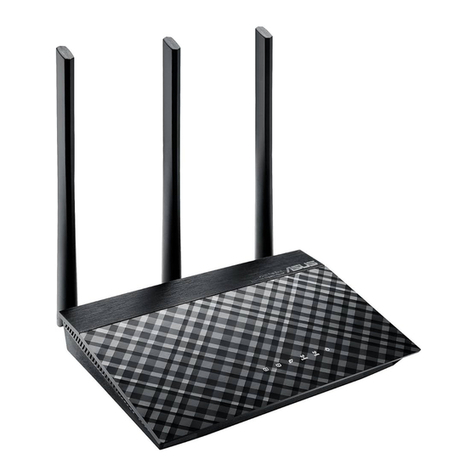Osaka OF 33 Z User manual

OSAKA - OF 33 AZ - OPERATING INSTRUCTIONS - Vr. 01 - PAG. 1
OF 33 Z / OF 33 AZ
MICROPROCESSOR-BASED
DIGITAL ELECTRONIC FREEZER
CONTROLLER
OPERATING INSTRUCTIONS
FOREWORD
This manual contains the information necessary for the product
to be installed correctly and also instructions for its
maintenance and use; we therefore recommend that the utmost
attention is paid to the following instructions.
Though this manual has been issued with the greatest care,
OSAKA will not take any responsibility deriving from its use.
The same applies to each person or Company involved in the
issuing of this manual.
This document is the exclusive property of OSAKA which
forbids any reproduction and divulgation , even in part, of the
document, unless expressly authorized.
OSAKA reserves the right to make any formal or functional
changes at any moment and without any notice.
INDEX
1
INSTRUMENT DESCRIPTION
1.1
GENERAL DESCRIPTION
1.2
FRONT PANEL DESCRIPTION
2
PROGRAMMING
2.1
PROGRAMMING OF SET POINT
2.2
PARAMETERS PROGRAMMING
2.3
PARAMETER PROTECTION USING THE
PASSWORD
2.4
PARAMETERS PROGRAMMING LEVEL
2.5
ACTIVE SET POINT SELECTION
2.6
ON / STAND-BY FUNCTION
2.7
CLOCK PROGRAMMING
3
INFORMATION ON INSTALLATION AND USE
3.1
PERMITTED USE
3.2
MECHANICAL MOUNTING
3.3
ELECTRICAL CONNECTIONS
3.4
ELECTRICAL WIRING DIAGRAM
4
FUNCTIONS
4.1
MEASURING AND VISUALIZATION
4.2
OUTPUTS CONFIGURATION
4.3
TEMPERATURE CONTROL
4.4
CONTINUOUS CYCLE FUNCTION
4.5
COMPRESSOR PROTECTION FUNCTION AND AND
DELAY AT POWER-ON
4.6
DEFROST CONTROL
4.7
MANUAL DEFROST
4.8
EVAPORATOR FANS CONTROL
4.9
ALARM FUNCTIONS
4.9.1
TEMPERATURE ALARMS
4.9.2
EXTERNAL ALARM
4.9.3
OPEN DOOR ALARM
4.9.4
ALARM MEMORY
4.10
DIGITAL INPUT
4.11
AUXILIARY OUTPUT
4.12
FUNCTION OF KEYS “F” AND “DOWN/AUX”
4.13
KEY USB + OSAKA SETUP: KEY PROGRAMMING
5
PROGRAMMABLE PARAMETERS TABLE
6
PROBLEMS , MAINTENANCE AND GUARANTEE
6.1
SIGNALLING
6.2
CLEANING
6.3
GUARANTEE AND REPAIRS
7
TECHNICAL DATA
7.1
ELECTRICAL DATA
7.2
MECHANICAL DATA
7.3
MECHANICAL DIMENSIONS, PANEL CUT-OUT AND
MOUNTING
7.4
FUNCTIONAL DATA
1 - INSTRUMENT DESCRIPTION
1.1 - GENERAL DESCRIPTION
The model OF 33 AZ is a digital controller with microprocessor
that is typically used in cooling applications that have
temperature control with ON/OFF regulation and defrosting
control with set time and hours intervals (Real Time Clock
Defrosting) by means of electrical heating or hot gas/cycle
inversion.
The instrument has 3 relay outputs, two inputs for PTC or NTC
temperature probes and a digital input, that can all be
configured.
The 3 outputs can be used for controlling the compressor or the
temperature control device (OUT), the defrosting device (DEF),
the evaporation fan (FAN) or, alternatively any of the previous
functions, using an auxiliary device (AUX) or an alarm (AL).
The two inputs for the PTC and NTC temperature probes
(which can be selected by parameter) can be used to measure
the cell temperature (Pr1) and the evaporator temperature (Pr2)
while the digital input (DIG) can be programmed to carry out
various functions such as defrosting commands, selecting a
different set of temperature regulations, external alarm signals,
activating a continuous cycle, and activating an auxiliary output
etc.
The instrument is equipped with 4 programme keys, a 4-digit
display and 9 LED signals, in addition to an internal buzzer that
is the sound system for alarms.
Other important characteristics of the instrument are:
programme parameters protection using personalised
password, switching on and off (stand-by) of the instrument
using the front keys or the digital input, configuration of
parameters via the COPY KEY device, memorising of two sets
of temperature regulations that can be switched and the
possibility of power supply in the range 100 ... 240 VAC.
1.2 - FRONT PANEL DESCRIPTION

OSAKA - OF 33 AZ - OPERATING INSTRUCTIONS - Vr. 01 - PAG. 2
1 - Key Set : Used for setting the Set point and for
programming the function parameters
2 - Key DOWN/Aux : Used for decreasing the values to be set
and for selecting the parameters. It can also be programmed
via the parameter “Fbd” to carry out other functions such as
activating the Aux output, starting up the continuous cycle,
selecting the active set point or turning on and off (stand-by)
the device (see par. 4.12).
3 - Key UP/DEFROST : Used for increasing the value to be set,
for selecting the parameters and for activating manual
defrosting.
4 - Key F : Used for visualising the temperatures taken by the
cell probes and evaporator (Pr1 and Pr2) and the internal clock
(if present). It can also be programmed via the parameter
“USrb” to carry out other functions, just like the key
DOWN/AUX (see par. 4.12).
5 - Led OUT : Indicates the compressor output status (or the
temperature control device) on (on), off (off) or inhibited
(flashing)
6 - Led DEF : Indicates defrosting in progress (on) or dripping
(flashing).
7 - Led FAN : Indicates fan output status on (on), off (off) or
delayed after defrosting (flashing)
8 - Led AUX : Indicates AUX output status on (on), off (off) or
inhibited (flashing)
9 - Led AL : Indicates the alarm status (on), off (off) and
silenced or memorized (flashing)
10 - Led SET : Indicates the input in programming mode and
the programming level of the parameters. It also serves to
indicate the Stand-by status.
11 - Led - : Indicates that a low temperature alarm is in
progress (lit) or that a low temperature alarm has been
memorised (flashing).
12 - Led OK : Indicates that no alarms are in progress
13 - Led + : Indicates that a high temperature alarm is in
progress (lit) or that a high temperature alarm has been
memorised (flashing).
2 -PROGRAMMING
2.1 - PROGRAMMING OF THE SET POINT
Press the key Set then release it and the display will show SP 1
(or SP 2 if the second set is active at that time) alternating with
the set value (see selection of the active set point).
To change it press the UP key to increase the value or DOWN
to decrease it.
These keys increase or decrease the value one digit at a time,
but if the button is pressed for more than one second the value
increase or decreases rapidly, and after two seconds pressed,
the speed increases even more to all the desired valued to be
reached rapidly.
Exiting the Set mode is achieved by pressing the Set key or
automatically if no key is pressed for 15 seconds. After that
time the display returns to the normal function mode.
2.2 - PARAMETERS PROGRAMMING
To access the instrument’s function parameters, press the key
Set and keep it pressed for about 5 seconds, after which the
SET led will light up, the display will visualised the code that
identifies the first group of parameters (“]SP “) and the group of
parameters that are to be edited are selected by pressing the
UP and DOWN keys.
Once the group of parameters has been selected, press the
Set and the code that identifies the first parameter in the
selected group will be visualised.
Again using the UP and DOWN keys, the desired parameter
can be selected and pressing the Set key, the display will
alternately show the parameter code and its setting that can be
changed with the UP and DOWN keys.
Once the desired value has been set, press the key Set again:
the new value will be memorised and the display will show only
the abbreviation of the selected parameter.
Pressing the UP and DOWN keys, it is possible to select
another parameter (if present) and change it as described.
To return to select another group of parameters, keep the UP
or the DOWN key pressed for about 1 second, after which the
display will return to showing the code of the parameter group.
Release the pressed key and using the UP and DOWN keys it
will be possible to select another group (if present).
To exit the programming mode, do not press any key for about
20 seconds, or keep the UP or DOWN key pressed until it exits
the programming mode.
Longer
H o ld
2 sec .
H o ld fo r
2 sec .
H o ld fo r
5 sec .
H o ld fo r
2.3 - PARAMETER PROTECTION USING THE PASSWORD
The instrument has a parameter protection function using a
password that can be personalised, through the “PASS”
parameter in the “]PAn” set.
If one wishes to have this protection, set the password number
desired in the parameter “PASS”.
When the protection is working, press the Set key to access
the parameters and keep it press for about 5 seconds, after
which the LED SET will flash and the display will show “0” .
At this point, using the UP and DOWN keys, set the password
number programmed and press the key “Set”.
If the password is correct, the display will visualise the code
that identifies the first group of parameters(“]SP “) and it will be
possible to programme the instrument in the same ways
described in the previous section.
Protection using a password can be disabled by setting the
parameter “PASS” = OFF.
2.4 - PARAMETERS PROGRAMMING LEVELS
The instrument has two parameter programming levels.
The first level (“visible” parameters) is accessed according to
the procedure described above (with or without password
request) while the second level (“hidden” password) can be
accessed according to the following procedure.
Remove the power supply to the instrument, press the key Set
and return power to the instrument, keeping the key pressed.
After about 5 sec. the SET led will light up, the display will show
the code that identifies the first group of parameters(“]SP “) and
it will be possible to set the parameters of the instrument using
the same programming procedure described previously.
Once the parameter has been selected and the SET is on, it
means that the parameter can be programmed even on the first
level ("visible”).
If the LED is off it means that the parameter can only be
programmed on this level (i.e. “hidden”).
To change the visibility of the parameter, press the key U: the
led SET will change status, indicating the accessibility level of
the parameter (on = parameter “visible”; off = parameter
“hidden”).
The access procedure for “hidden” parameters allows the
“PASS” parameter to be checked and changed, and is useful
therefore if the password set has been forgotten.
2.5 - ACTIVE SET POINT SELECTION
The instrument allows up to 2 different regulation Set points to
be pre-set (“SP 1” and “SP 2”) and then to choose which one
to make active.

OSAKA - OF 33 AZ - OPERATING INSTRUCTIONS - Vr. 01 - PAG. 3
This function can be used if it is necessary to switch two
different function temperatures (e.g. day and night or positive
and negative etc).
The active set point can be selected:
- Using the parameter “SPAt”
- using the key F if the parameter "USrb" = 3.
- Using the key DOWN/AUX
if the parameter "Fbd" = 3.
- Using the digital input if
the parameter. “diF” = 8
(see par. 4.10 e 4.12)
The Set points "SP1" and "SP2" can be set with a value
between the programmed value in parameter. “SPLL” and the
programmed value in parameter “SPHL”.
Nota: in the examples that follow, the Set point is generally
indicated as "SP", how when operating the instrument will work
according to the Set point selected as active.
2.6 - ON / STAND-BY FUNCTION
The instrument, once powered up, can assume 2 different
conditions:
- ON : means that the controller uses the control functions.
- STAND-BY : means that the controller does not use any
control function and the display is turned off except for the
green SET led.
If there is no power, and then power returns, the system always
sets itself in the condition it was in before the black-out.
The ON/Stand-by function can be selected:
- Using the key F if the parameter "USrb" = 4.
- Using the key DOWN/AUX if the parameter "Fbd" = 4.
- using the digital input if the parameter “diF” = 10
(see par. 4.10 e 4.12)
2.7 - TIME SETTING
When the instrument has an internal clock it is necessary to
programme it on the current time by using the parameter
“StCL” contained in the group “]CLO“.
The instrument has an internal quartz for the clock, however,
should the clock become inaccurate (especially over a long
period) it can be adjusted daily using the parameter “CLOF”
contained in the same group.
The working of the clock is guaranteed by an internal
condenser for a period of about 4 hours without any power to
the instrument.
If the instrument should remain without power for a long period,
remember to check and if necessary re-programme the exact
time.
3 - INFORMATION ON INSTALLATION AND USE
3.1 - PERMITTED USE
The devices are made as measuring and
regulating equipment in accordance with EN
61010-1 norm for operation up to an altitude of
2000 mts.
The use of equipment for standard applications
not expressly provided in norm cited above,
should provide all measurement and adjustments necessary
protection.
The equipment must be adequately protected and away from
liquids, dust, grease and dirt. They must be accessible only
with the use of a right tool and safety system (except the front).
The devices can NOT be used in dangerous environments
(flammable or explosive) without adequate protection.
It is recalled that the installer must ensure that the norm for
electromagnetic compatibility is respected after implantation in
the installation of equipment, eventually using the right filters if
is needed.
In case of failure or malfunction of measuring and control
equipment that can create dangerous situations or damage to
persons, things, animals or products (defrost food or changes
in their ideal state), it is recalled that the facility should be
equipped with electronic devices or electromechanical safety
and warning system.
They should be placed outside the measuring and control
equipments, possible protective devices, responding to specific
safety requirements that are covered by the norm of the
product or suggest the common sense.
For your own safety, is highly recommended fulfilling the
instructions provided above.
The instrument, in case 33 x 75 mm, is designed for flush-in
panel mounting.
Make a hole 29 x 71 mm and insert the instrument, fixing it with
the provided special bracket.
We recommend that the gasket is mounted in order to obtain
the front protection degree as declared. Avoid placing the
instrument in environments with very high humidity levels or dirt
that may create condensation or introduction of conductive
substances into the instrument.
Ensure adequate ventilation to the instrument and avoid
installation in containers that house devices which may
overheat or which may cause the instrument to function at a
higher temperature than the one permitted and declared.
Connect the instrument as far away as possible from sources
of electromagnetic disturbances such as motors, power relays,
relays, solenoid valves, etc.
3.3 - ELECTRICAL CONNECTION
Carry out the electrical wiring by connecting only one wire to
each terminal, according to the following diagram, checking
that the power supply is the same as that indicated on the
instrument and that the load current absorption is no higher
than the maximum electricity current permitted.
As the instrument is built-in equipment with permanent
connection inside housing, it is not equipped with either
switches or internal devices to protect against overload of
current: the installation will include an overload protection and a
two-phase circuit-breaker, placed as near as possible to the
instrument, and located in a position that can easily be reached
by the user and marked as instrument disconnecting device
which interrupts the power supply to the equipment.
It is also recommended that the supply of all the electrical
circuits connected to the instrument must be protect properly,
using devices (ex. fuses) proportionate to the circulating
currents.
It is strongly recommended that cables with proper insulation,
according to the working voltages and temperatures, be used.
Furthermore, the input cable of the probe has to be kept
separate from line voltage wiring. If the input cable of the probe
is screened, it has to be connected to the ground with only one
side.
Whether the instrument is 12 V version it’s recommended to
use an external transformer TF3, or with equivalent features,
and to use only one transformer for each instrument because
there is no insulation between supply and input.
We recommend that a check should be made that the
parameters are those desired and that the application functions
correctly before connecting the outputs to the actuators so as
to avoid malfunctioning that may cause irregularities in the
plant that could cause damage to people, things or animals.
OSAKA and its legal representatives do not assume any
responsibility for any damage to people, things or animals
deriving from violation, wrong or improper use or in any
case not in compliance with the instrument’s features.
3.2 - MECHANICAL MOUNTING

OSAKA - OF 33 AZ - OPERATING INSTRUCTIONS - Vr. 01 - PAG. 4
3.4 - ELECTRICAL WIRING DIAGRAM
Dig
Pr1
Pr2
INPUTS
NO
NO
C
NC
SUPPLY
NO
OUT3: 5A-AC1(2A-AC3) / 250 VAC
OUT2: 8A-AC1(3A-AC3) / 250
VAC
OUT1: 16A-AC1(6A-AC3) / 250 VAC
OUT2
OUT1
OUT3
1
2
3
4
5
6
7
8
9
10
11
12
BUZZER
INTERNAL
OF 33 Z / OF 33 AZ
4 - FUNCTIONS
4.1 - MEASURING AND VISUALIZATION
All the parameters concerning measuring are contained in the
group “]InP”.
Via the parameter “SEnS” it is possible to select the type of
probes that one wishes to use and which can be: thermistores
PTC KTY81-121 (Ptc) or NTC 103AT-2 (ntc).
Once the type of probe used has been selected, through the
parameter “Unit”, it is possible to select the temperature unit
of measurement (°C or °F) and, through the parameter “dP”,
the resolution of the desired measurement (OFF=1°; On =0,1°).
The instrument allows the measuring to be calibrated, that can
be used for re-calibrating the instrument according to
application needs, through the parameters “OFS1” (for the
probe Pr1) and “OFS2” (for the probe Pr2).
If probe Pr2 (evaporator) is not used, set the parameter “Pr 2”
= OFF.
Using the parameter “FiL”, it is possible to set the time
constant for the software filter for measuring the input values to
be able to reduce the sensitivity to measurement disturbances
(increasing the time).
Through the paragraph “diSP”, it is possible to fix the normal
visualisation on the display that can be the measurement of the
cell probe (Pr 1), the measurement of the evaporator probe (Pr
2), the set point of active regulation (SP), the current hour if the
instrument has a clock (CLo) or it can have the numerical
display switched off (OFF).
Regardless of what is set in the parameter “diSP”, it is possible
to visualise all the variables in rotation by pressing the key F,
the display will alternately show the code that identifies the
variable (Pr 1, Pr 2 and, if present the clock, CLo) and its
value.
The exit of this visualisation mode occurs automatically 15
seconds after the last pressing on the key F.
Please remember that visualisation of the probe Pr1 can be
changed by the display block in defrosting function too, by
using the parameter “dLo” (see par. 4.6).
4.2 - OUTPUTS CONFIGURATION
The instrument outputs can be configured in the parameters
group “]Out” where the relative parameters “O1F” , “O2F”
“O3F” are found and also the parameter “buF” that allows
configuration of the internal buzzer (if present).
The outputs can be configured for the following functions
= Out - to control the compressor or however, the temperature
control device
= dEF - to control the defrosting device
= FAn - to control the fans
= AuS - to control the auxiliary device (see par. 4.11)
= ALt - to control a silenceable alarm device through a contact
that is normally open, and then closed when the alarm sounds
= AL - to control an alarm that cannot be silenced through a
contact that is normally open and closed when the alarm
sounds.
= ALL - to control an alarm with a memory function through a
contact that is normally open and closed when the alarm
sounds.
= -ALt - to control a silenceable alarm device through a contact
that is normally closed, and then open when the alarm sounds.
= -AL - control an alarm that cannot be silenced through a
contact that is normally closed and open when the alarm
sounds.
= -ALL - to control an alarm with a memory function through a
contact that is normally closed and open when the alarm
sounds (see alarm memory).
= OFF - Disabled output
4.3 - TEMPERATURE CONTROL
All the parameters concerning temperature regulation are
contained in the group “]rEG”.
The regulation of the instrument is ON/OFF and acts on the
output configured as “Out” depending on the measuring of
probe Pr1, of the active Set Point “SP” (1 or 2), the intervention
differential “HSEt” and the function mode “Func” .
Depending on the function mode programmed on the
parameter “Func” the differential is automatically considered by
the regulator with positive values for a Refrigeration control
(“Func”=CooL) or with negative values for a heating control
(“Func”=HEAt).
O ut
SP
off
ON
H E A t
O ut
tim e
H S E t
SP
Tem p .
H S E t
tim e
C ooL
ON ONON ON ON
offoff o ff
P r1 P r1
Tem p .
In the event of cell probe error (Pr1), it is possible to set the
instrument so that that the output “Out” continues to work in
cycles according to the times programmed in the parameter
“tonE” (activation time) and “toFE” (deactivation time).
If an error occurs on the probe Pr1 the instrument activates the
output for the time “tonE”, then deactivates it for the time “toFE”
and so on whilst the error remains.
Programming “tonE” = OFF lthe output in probe error condition
will remain switched off.
Programming instead “tonE” to any value and “toFE” = OFF the
output in probe error condition will remain switched on.
Remember that the temperature regulation function can be
conditioned by the “Continuous Cycle”, “Compressor
Protection”, “Minimum compressor function time”, “Delay
compressor start up after defrosting” and “inhibition of
compressor close to defrosting” functions described below.
4.4 - CONTINUOUS CYCLE FUNCTION
The instrument has a continuous cycle function by which it is
possible to maintain the configured output configured as “out”
always active for the time set in parameter “tCC” (in the group
“]rEG”) regardless of the temperature control command.
The function can be used for example, when rapid lowering of
the product temperature is required after the refrigerator
loading phase.
During the continuous cycle, the defrosting is inhibited and the
temperature alarms are disabled during the entire cycle and
also later for the time set in parameter “dALc” (see par. 4.9).
Starting up a continuous cycle can only be done by a manual
command using the F or DOWN/AUX (“UrSb” or “Fbd” = 2)
keys or via the digital input (“diF”=3) if suitably programmed
(see par. 4.10 and 4.12).
The continuous cycle in progress is shown on the display with
the indication CC and can be stopped by a further action on the
key or digital input (as for activation).
The continuous cycle function cannot be activated during
defrosting and with "tCC" = OFF.

OSAKA - OF 33 AZ - OPERATING INSTRUCTIONS - Vr. 01 - PAG. 5
4.5 - COMPRESSOR PROTECTION FUNCTION AND DELAY
AT POWER-ON
All the parameters concerning the compressor protection
functions and the delay at power on are contained in the group
“]PrC”.
The function “Compressor Protection” carried out by the
machine aims to avoid close start ups of the compressor
controlled by the instrument in cooling applications.
This function foresees a time control on the switching on of the
“Out” output associated with the temperature regulation
request.
The protection consists of preventing the output being switched
on during the time set in the parameter “PtC” and counted
depending on what has been programmed in the parameter
“PSC”, and therefore that any activation occurs only after the
“PtC” time has finished.
If during the power on delay phase, the regulator request
should disappear, due to an inhibition caused by the
compressor protection function, the foreseen start up of the
output is naturally cancelled.
Using the parameter "PSC", it is possible to set the type of
compressor protection and therefore from when the inhibition
time “PtC” must start.
The parameter “PSC” can be set as:
=1: Power on delay
Tem p.
O ut
P tC
off
ON
SP
P tCP tC
"P S C " = 1
tim e
H S E t
off off off
ON ON
P r1
=2: Delay after power off
ON
O ut off
P tC P tC P tC
SP
Tem p. "P S C " = 2
tim e
H S E t
ON ON
off off
P r1
=3: Delay between power on phases.
P tC
O ut off
SP
ON
Tem p .
P tC P tC
tim e
H S E t
"P S C " = 3
off off
ON ON
P r1
The function is disabled by programming “PtC” = 0.
Through the parameter “LCt” it is also possible to set the
minimum activation time of the output to avoid switching on of
the compressor that is too short.
During the power on delay phases of the OUT output by
inhibiting the function “Compressor Protection” or delay of
power off caused by the minimum function time “LCt”, the led
OUT flashes.
It is also possible to prevent activation of all the outputs after
the instrument is turned on, for the time set in the parameter
“od”.
The function is disabled by “od” = OFF.
During the power on delay phase, the display shows the
indication od, alternating with the normal programmed
visualisation.
4.6 - DEFROST CONTROL
All the parameters concerning the defrosting control that acts
on the outputs configured as “Out” and “dEF”, are container in
the group “]dEF”.
The type of defrosting that the instrument must carry out is set
by the parameter “dtyP” that can be programmed:
= EL - WITH ELECTRICAL HEATING or BY STOPPING
COMPRESSOR (during defrosting, the output “Out” is
deactivated while the output “dEF” is enabled)
= in - WITH HOT GAS or INVERSION OF CYCLE (during
defrosting the outputs “Out” and “dEF” are enabled)
The automatic defrosting can take place at intervals or if the
instrument has an internal clock, at set hours.
Defrosting at intervals is possible by setting the time that runs
between the two next automatic defrostings in the parameter
“dint”.
Counting this interval is set through the parameter "dCt" that
can be programmed:
= rt - counts the total function time (instrument on)
= ct - counts only the compressor function time (output OUT
switched on)
= cS - the instrument carries out a defrosting cycle at each
compressor stop (i.e. at each deactivation of the output OUT).
If this option is used, set “dint”=OFF.
if the instrument has an internal clock, it is possible to carry out
up to 6 defrostings per day at set times.
To use this mode, it is necessary to set the parameter
"dint"=OFF so that the defrosting at intervals is disabled and to
set the parameters “dF 1”, “dF 2”, “dF 3”, “dF 4”, “dF 5”,
“dF 6” with the times when the defrosting must be carried out.
The automatic defrosting cycle can be at time intervals or, if an
evaporator probe is used (Pr2), when a temperature is reached.
If the evaporator probe is not used (par. “Pr 2” = OFF) the
duration cycle is set by the parameter “dEFE”.
If instead the evaporator probe is used (parameter “Pr 2” = on)
the defrosting takes place when the temperature measured by
the probe exceeds the temperature set in the parameter
“tEdF”.
If this temperature is not reached in the time set in the
parameter “dEFE”, defrosting is interrupted.
In order to avoid pointless defrosting the parameter. “tSdF” is
foreseen that sets the enablement temperature for defrosting
If the temperature measured by the probe is higher than the
one set in the parameter “tSdF” and in the parameter "tEFE"
the defrosting is inhibited.
(N O d ef.)
(d e fro s t)
tE d F
d E F off
ON
tS d F
dint
1
P r2
Tem p.
(d e fro s t)
dint d E F E
2
dint dint
3
tim e
off o ff
ON
Examples: defrosting 1 ends due to reaching of temperature
“tEdF”, defrosting 2 ends at the end of the “dEFE” time as the
temperature “tEdF” is not reached, defrosting 3 does not take
place as the temperature is higher than “tSdF”.
At the end of defrosting, it is possible to delay the new start up
of the compressor (output “Out”) at the time set in parameter
“tdCO” to allow the evaporator to drain.
During this delay, the led Def flashes to indicate the draining
state.
It is also possible to prevent start up of the compressor near to
defrosting, to avoid waste of energy.
If inside the time set in the parameter “COFd” (counted in
advance compared to the start up of automatic defrosting both
at intervals and by clock), an activation request for the output
“Out” should take place, this does not take place and it is
signalled by the flashing of the Out led.

OSAKA - OF 33 AZ - OPERATING INSTRUCTIONS - Vr. 01 - PAG. 6
If one wishes to set a defrosting cycle every time the instrument
is switched on (as long as the conditions set in the parameters
“tSdF” and "tEFE" apply) programme the parameter “SdEF” =
yES.
This allows the evaporator to be permanently defrosted, even
when frequent interruptions to power supply occur that may
cause the cancellation of the various defrosting cycles.
During the defrosting, it may occur that the temperature
measured by the cell probe (Pr1) increases excessively (this
obviously depends on the position of the probe Pr1 compared
to the evaporator).
In the event that one does not wish this increase to be
visualised by the instrument, it is possible to use the functions
in the parameter “dLo” (Block display during defrosting) and
“Etdu” (Differential unblocking of display after defrosting).
The parameter “dLo” = On allows the temperature Pr1
visualisation to be blocked on the last reading during a whole
defrosting cycle and until the temperature does not return
under the value [”SP” + “Etdu”] after defrosting has finished (or
the time set in the parameter "dALd" contained in the block
“]AL”).
With “dLo” = Lb, this allows visualisation of the writing dEF
during defrosting and at the end of defrosting the writing PdEF
up to when the temperature Pr1 does not return below the
value [”SP” + “Etdu”] (or the time set on the parameter "dALd"
contained in the block “]AL”).
Alternatively with the “dLo” = OFF, during defrosting, the
instrument will continue to visualise the temperature measured
by the probe Pr1.
Note that during defrosting, the temperature alarms are
disabled during the whole cycle and also afterwards for the
time set in the parameter “dALd” (see par. 4.9).
4.7 - MANUAL DEFROST
To start up a manual defrosting cycle, press the key
UP/DEFROST when it is not in programming mode and keep it
pressed for about 5 seconds after which, if the conditions are
correct, the led DEF will light up and the instrument will carry
out a defrosting cycle.
The start up or switch off commands of a defrosting cycle can
also be given by the digital input that are correctly programmed
(see par. 4.10).
4.8 - EVAPORATOR FANS CONTROL
All the parameters concerning fan control are contained in the
group “]FAn”.
The control of the fans on the output configured as “FAn”
depending on determined control statuses of the instrument
and the temperature measured by the probe Pr2.
In the case that the probe Pr2 is not used (parameter “Pr 2” =
OFF) or in error (E2 o -E2) , the output FAN is activated only
depending on the parameters “FCOF” and “FEdF”.
The parameter “FCOF” decides whether the fans must always
be switched on independently of the compressor status
(“FCOF”=On) or be switched off together with the compressor
(“FCOF”=OFF).
The parameter “FEdF” instead decides whether the fans must
always be switched on independently of the defrosting status
(“FEdF”=On) or switched off during defrosting (“FEdF”=OFF).
In this latter case, it is possible to delay the start up of the fans
even after the end of the defrosting of the time set in the
parameter “Fd”.
When the probe Pr2 is used (par. “Pr 2” = on) the fans, as well
as being conditioned by the parameters “FCOF” and “FEdF”,
are also conditioned by the temperature control.
It is possible to set the disablement of the fans when the
temperature measured by the probe Pr2 is higher than the one
set in the parameter “FLt” (temperature too hot) or when it is
lower than the one set in the parameter “Fct” (temperature too
cold).
The relative differential that can be set in parameter “dF” is
also associated with these parameters.
dF
dF
tim e
F A n off
ON
Fct
P r2
Tem p .
FLt
off off
ON
4.9 - ALARM FUNCTIONS
All the parameters concerning the alarm functions are
contained in group “]AL”.
The alarm functions of the instrument work on the internal
buzzer, if present and configured via the parameter “buF”, and
on the output desired, if configured by the parameters “O1F”,
“O2F” or “O3F”, depending on what is set on the said
parameters.
The possible selections of these parameters for the alarm
signalling function are:
= ALt - when one wants the buzzer or output to be activated in
alarm and can be disabled (alarm silencing) manually by
pressing any key of the instrument (typical application for
sound signal).
= AL - when one wants the buzzer or output to be activated in
alarm status but cannot be disabled manually and are therefore
only disabled when the alarm status ceases (typical application
for a light signal).
= ALL - when one wants the buzzer or output to be activated in
alarm status and that they remain activated even when the
alarm has ceased (see par.4.9.4) Disablement (recognition of
memorised alarm) can only be carried out manually by pressing
any key when the alarm has ended (typical application for light
signal).
= -ALt - when one wants the function described as ALt but with
an inverse function (buzzer or output activated in normal
condition and disabled in alarm status).
= -AL - when one wants the function described as AL but with
inverse logic (buzzer or output activated in normal conditions
and disabled in alarm status).
= -ALL - when one wants the function described as ALL but
with inverse working logic (buzzer or output activated in normal
conditions and disabled in alarm status).
When no alarms are present, the green LED OK is lit.
Any active alarm is shown on the instrument display with the
lighting up of the AL led and the switching off of the led OK.
Any silenced or memorised alarm status is shown by the AL
led flashing .
The alarm conditions of the instrument are:
- Probe errors “E1”, “-E1”, “E2, “-E2”
- temperature alarms “HI” and “LO”
- External alarms “AL”
- Open door alarm “AP”
4.9.1 - TEMPERATURE ALARMS
The temperature alarms work according to the probe Pr1
measurements, the type of alarm set in the parameter “Aty”
the alarm thresholds set in parameters “HAL” (maximum
alarm) and “LAL” (minimum alarm) and the relative differential
“dAL”.
Through the parameter “Aty” it is possible to set the alarm
thresholds “HAL” and “LAL” which must be considered as
absolute (“Aty”=Ab) or relative to the active Set Point
(“Aty”=dE).
Using some parameters it is also possible to delay the
enablement and the intervention of these alarms.
These parameters are:
“PAL” - is the temperature alarm exclusion time on switching
on the instrument if the instrument is in alarm status when it is
switched on.

OSAKA - OF 33 AZ - OPERATING INSTRUCTIONS - Vr. 01 - PAG. 7
“dALd” - is the temperature alarm exclusion time at the end of
defrosting (and , if programmed, at the end of draining)
"dALc" - is the temperature alarm exclusion time at the end of
a continuous cycle.
“ALd” - is the temperature alarm delay activation time
The temperature alarm is enabled at the end of exclusion time
and is enabled after the “ALd” time when the temperature
measured by the probe Pr1 exceeds or goes below the
respective maximum and minimum alarm thresholds.
The alarm thresholds will be the same as those set on the
parameters “HAL” and LAL” if the alarms are absolute
(“Aty”=Ab)
d A L
d A L
tim e
AL off
ON
L A L
HI
H A L
Te m p.
P r1
LO
off off
ON
Or will be the values [”SP”+”HAL”] and [”SP”-”LAL”] if the
alarms are relative (“Aty”=dE).
tim e
d A L
d A L
AL off
ON
HI
L A L
SP
H A L
Te m p.
P r1
LO
off o ff
ON
The maximum and minimum temperature alarms can be
disabled by setting the relative parameters "HAL" and "LAL" =
OFF.
At the same time as the signalling of the configured alarm
(buzzer and/or output), the instrument signals the alarm by
turning on the led light AL, switching off the LED OK, turning on
the led - in case of minimum alarm or the led + for maximum
alarm, and visualises on the display:
- Alternately HI and the set variable in parameter “diSP” for
maximum alarm
- Alternately LO and the set variable in parameter “diSP” for the
minimum alarm
4.9.2 - EXTERNAL ALARM
The instrument can signal an external alarm by activating the
digital input with the function programmed as “diF” = 4 or 9 (see
par. 4.10).
At the same time as the signalling of the configured alarm
(buzzer and/or output), the instrument signals the alarm by
turning on the led AL, turning off the led OK and visualising AL
and the variable set in parameter “diSP” alternately on the
display.
4.9.3 - OPEN DOOR ALARM
The instrument can signal an open door alarm by activating the
digital input with the function programmed as “din” = 5 or 6 (see
par. 4.10).
When the digital input is activated and after the delay
programmed in parameter “oAd”, the instrument signals the
alarm via the activation of the configured devices (buzzer
and/or output), the turning on of the led AL, the turning off of
the led OK and AP and the variable set in parameter “diSP” are
visualised alternately on the display.
4.9.4 - ALARM MEMORY
The instrument offers the possibility of arranging the alarm
memory function via the parameter “tAL”.
If "tAL" = no, the instrument cancels the alarm signal when the
alarm status ends, if instead it is programmed as "yES" , the
led AL flashes even when the alarm status has ended to
indicate that there has been an alarm.
If the memorised alarm is for temperature, it also keeps the led
- flashing to show a minimum alarm and + to show a maximum
alarm.
To cancel the alarm memory signal, press any key.
It must be remembered that if an output function is desired (or
the buzzer) with an alarm memory (=ALL or =-ALL) it is
necessary to set the parameter “tAL” = yES.
4.10 - DIGITAL INPUT
All the parameters concerning the digital input functions are
contained in the group “]din”.
The digital input present on the instrument accepts contacts
free of voltage, the function carried out is defined by the
parameter “diF” and the action can be delayed for the time set
in parameter “did”.
The parameter “diF” can be configured for the following
functions:
=0- Digital input not active
= 1 - defrosting commencement command with contact
normally open: on closing the input (and after the “did” time) a
defrosting cycle is activated.
= 2 - defrosting end command with contact normally open: on
closing the input (and after the “did” time) a defrosting cycle is
ended if in progress or defrosting is inhibited.
= 3 - continuous cycle activation command with contact
normally open: on closing the input (and after the “did” time) a
continuous cycle is started up as described in the paragraph on
the continuous cycle function.
= 4 - External alarm signal with contact normally open: on
closing the input (and after the “did” time) the alarm is activated
and the instrument visualises AL and the variable set in
parameter “diSP” alternately on the display.
= 5 -Cell door opening with fan block with contact normally
open: on closing the input (and after the “did” time) the fans are
stopped and the instrument visualises AP and the variable set
in parameter “diSP” alternately on the display. With this
function mode, the action of the digital input also activates the
time that can be set in parameter "oAd" after which the alarm is
activated to signal that the door has been left open.
= 6 - Cell door opening with compressor and fan block with
contact normally open: similar to “diF” = 5 but with fan and
compressor block.
= 7 - Remote control of auxiliary output AUX with contact
normally open: on closing the input (and after the “did” time)
the auxiliary output is activated as described in the "FOA" = 2
function mode of the auxiliary output.
= 8 - Selecting the active set point with contact normally open:
on closing the input (and after the “did” time) the temperature
regulation set point “SP 2” is activated. When instead the input
is open the set point “SP 1” is active (see selecting active set
point)
= 9 - Signalling of external alarm with disablement of all the
control outputs with contact normally open: on closing the input
(and after the “did” time) all the control outputs are disabled,
the alarm is activated and the instrument visualises AL and the
variable set in parameter “diSP” alternately on the display.
= 10 - Switching on/switching off (Stand-by) of instrument with
contact normally open: on closing the input (and after the “did”
time) the instrument is switched on while it is placed in Stand-
by when opened.
= -1 - defrosting commencement command with contact
normally closed : similar to “diF”=1 but with function logic
reversed.
= -2 - defrosting end command with contact normally closed :
similar to “diF”=2 but with function logic reversed.
= -3 - continuous cycle start-up command with contact normally
closed : similar to “diF”=3 but with function logic reversed.

OSAKA - OF 33 AZ - OPERATING INSTRUCTIONS - Vr. 01 - PAG. 8
= -4 - External alarm signal with contact normally closed :
similar to “diF”=4 but with function logic reversed.
= -5 - Cell door opening with fan block with contact normally
closed : similar to “diF”=5 but with function logic reversed
= -6 - Cell door opening with compressor and fan block with
contact normally closed : similar to “diF”=6 but with function
logic reversed.
= -7 - Remote control of auxiliary output AUX with contact
normally closed : similar to “diF”=7 but with function logic
reversed.
= -8 - Selecting the active set point with contact normally closed
: similar to “diF”=8 but with function logic reversed.
= -9 - Signalling of external alarm with disablement of all the
outputs with contact normally closed : similar to “diF”=9 but with
function logic reversed
= -10 - Switching on/off (Stand-by) of instrument: similar to
“diF”=10 but with function logic reversed.
4.11 - AUXILIARY OUTPUT
All the parameters concerning the auxiliary output functions are
contained in the group “]AuS”.
The auxiliary outpurt can be configured to operate on any of the
outputs by programming the parameter of the desired output =
AuS.
The function carried out is defined by the parameter “FOA”
and the function is conditioned by the time set in parameter
“tuA”.
The parameter “FOA” can be configured for the following
functions:
= 0 - Auxiliary output not active
= 1 - Regulation output delayed with contact normally open: the
auxiliary output is activated with delay that can be set on the
parameter "tuA" compared to the output configured as Out. The
output is then turned off at the same time as the OUT output is
disabled. This function mode can be used as a command for a
second compressor or for all other working utilities according to
the same OUT output conditions, but which must be delayed
after the start up of the compressor to avoid excess electricity
absorption.
= 2 - Activation by front key (U or DOWN/AUX) or by digital
input with contact normally open: the output is activated by
pressing the keys F or DOWN/AUX suitably configured (“USrb”
or “Fbd” = 1) or via activation of the digital input if suitably
configured (“diF”=7). These commands have a bi-stable
function, Which means that when first pressed, the output key
is activated while the second is disabled. In this mode, the AUX
output can be turned off automatically after a certain time that
can be set on the parameter "tuA". With "tuA" = OFF the output
is activated and deactivated only manually, using the front key
(U or DOWN/AUX) or via the digital input. Differently, the
output, once activated, is turned off automatically after the set
time. This function can be used, for example, as a cell light
command, for non-misting resistance or other utilities .
= -1 - Delayed regulation output with contact normally closed:
similar to “FOA”=1 but with function logic reversed.
= -2 - Activation by front key (U or DOWN/AUX) or by digital
input with contact normally closed: similar to “FOA”=2 but with
function logic reversed.
4.12 - FUNCTIONING OF KEYS “F” AND “DOWN/AUX”
Two of the instrument keys, in addition to their normal
functions, can be configured to operate other commands.
The F key function can be defined by the parameter “USrb”
while the DOWN/AUX key function can be defined by the
parameter “Fbd” both contained in the group “]PAn”.
Both the parameters have the same possibilities and can be
configured for the following functions:
=0- The key carries out no function.
= 1 - Pressing the key for at least 1 second, it is possible to
enable/disable the auxiliary output if configured (“FOA”=2).
= 2 - Pressing the key for at least 1 second, it is possible to
enable/disable a continuous cycle (see continuous cycle
function).
= 3 - Pressing the key for at least 1 second, it is possible to
select one of the 2 memorised set point in rotation. Once
selection has been made, the display will flash the active set
point code for about 1 sec. (SP 1or SP 2).
= 4 - Pressing the key for at least 1 second, it is possible to
switch the instrument from the ON status to Stand-by status
and vice versa.
4.13 - KEY USB + OSAKA SETUP: KEY PROGRAMMING
Extracting the box you have access to a white connector that
allows easy programming with programming key 5 pin. This key
allows repetitive schedules and save the settings in a practical
and simple.
There are 2 types of Key, the key enabling USB connection pc
and save the different configurations and set parameters and
Manual Key 5 pin only for connecting thermostats.
An advantage and recommendation is the use of the supplied
power supply KEY without connecting the F 100 / TSF 100 / M1
to power.
S U P P L Y
S U P P L Y A D A P T E R
1 2 V D C A C S U P P L Y
S U P P L Y A D A P T E R
1 2 V D C A C S U P P L Y
U S B

OSAKA - OF 33 AZ - OPERATING INSTRUCTIONS - Vr. 01 - PAG. 9
5 - PROGRAMMABLE PARAMETERS TABLE
Here below is a description of all the parameters available on
the instrument. Some of them may not be present, either due
to the fact they depend on the type of instrument or because
they are automatically disabled as unnecessary.
Group ]SP (parameters relative to Set Point)
Par.
Description
Range
Def.
1
SPAt
Active Set point
1 ÷ 2
1
2
SP1
Set Point 1
SPLL ÷ SPHL
0.0
3
SP2
Set Point 2
SPLL ÷ SPHL
0.0
4
SPLL
Minimum Set Point
-58 ÷ SPHL
-50.0
5
SPHL
Maximum Set Point
SPLL ÷ 302
100.0
Group ]InP (parameters relative to measuring inputs)
Par.
Description
Range
Def.
6
SEnS
Probes Type
Ptc - ntc
Ptc
7
OFS1
Pr1 Probe (cell)
Calibration
-30 ÷ 30
°C/°F
0.0
8
OFS2
Pr2 Probe (evaporator)
Calibration
-30 ÷ 30
°C/°F
0.0
9
Pr 2
Pr2 Probe Presence
(evaporator)
On - OFF
On
10
Unit
Unit of measurement
°C - °F
°C
11
dP
Decimal point
On - OFF
On
12
FiL
Measurement filter
OFF ÷ 20.0
sec
2.0
13
diSP
Variable visualized
normally on display:
OFF=Display off
Pr1= measurement probe
Pr1
Pr2= measurement probe
Pr2
SP= Active Set Point
CL= Clock time
OFF - Pr1 -
Pr2 - SP - CL
Pr1
Group ]rEG (parameters relative to temperature control)
Par.
Description
Range
Def.
14
HSEt
Differential
0 ÷ 30
°C/°F
2.0
15
tonE
Activation time output
OUT for probe Pr1
broken
OFF ÷ 99.59
min.sec
OFF
16
toFE
Deactivation time output
OUT for probe Pr1
broken
OFF ÷ 99.59
min.sec
OFF
17
Func
Function mode output
OUT
HEAt - CooL
CooL
18
tCC
Continuous cycle Time
OFF ÷ 99.59
hrs.min
OFF
Group ]dEF (parameters relative to defrosting control)
Par.
Description
Range
Def.
19
dtyP
Defrosting Type:
EL = electrical
in = hot gas/reverse cycle
EL - in
EL
20
dint
Defrosting interval
OFF ÷ 99.59
hrs.min
6.00
21
dF 1
Time start defrost 1
OFF - 00.00 ÷
23.59 hrs.min
OFF
22
dF 2
Time start defrost 2
OFF - 00.00 ÷
23.59 hrs.min
OFF
23
dF 3
Time start defrost 3
OFF - 00.00 ÷
23.59 hrs.min
OFF
24
dF 4
Time start defrost 4
OFF - 00.00 ÷
23.59 hrs.min
OFF
25
dF 5
Time start defrost 5
OFF - 00.00 ÷
23.59 hrs.min
OFF
26
dF 6
Time start defrost 6
OFF - 00.00 ÷
23.59 hrs.min
OFF
27
dEFE
Max. lenght of defrost
cycle
0.01 ÷ 99.59
min.sec
30.00
28
tEdF
Defrost stop temperature
- 58 ÷ 302
°C/°F
8.0
29
tSdF
Defrost enable
temperature
- 58 ÷ 302
°C/°F
2.0
30
dCt
Defrosting intervals
Counting mode:
rt = real time
ct = On OUT time
cS = defrost every off
OUT
rt - ct - cS
rt
31
tdCO
Compressor delay after
defrost (drainage time)
OFF ÷ 99.59
min.sec
OFF
32
SdEF
Defrost at power on
no - yES
no
33
dLo
Defrost display
LockOFF= display
freeOn= Lock on
temperature Pr1 before
defrostLb= Lock on label
“dEF” (during defrosting)
and “PdEF” (during post-
defrosting)
On - OFF - Lb
OFF
34
Etdu
Differential display unlock
after defrost
0 ÷ 30
°C/°F
2.0
35
COFd
Time compressor off
before defrost
OFF ÷ 99.59
min.sec
OFF
Group ]FAn (parameters relative to evaporator fan control)
Par.
Description
Range
Def.
36
FCOF
Fan status with
compressor off
On - OFF
On
37
FEdF
Fan status during defrost
On - OFF
OFF
38
FLt
High temperature fan off
- 58 ÷ 302
°C/°F
2.0
39
Fct
Low temperature fan off
- 58 ÷ 302
°C/°F
-50.0
40
dF
Differential fan control
0 ÷ 30
°C/°F
2.0
41
Fd
Fan delay after defrost
OFF ÷ 99.59
min.sec
OFF
Group ]PrC (parameters relative to compressor protection and
power on delay)
Par.
Description
Range
Def.
42
PSC
Type of compressor
protection:1= delay at
switch on2= delay after
switch off3= delay
between starts
1 - 2 - 3
1
43
PtC
Compressor protection
time
OFF ÷ 99.59
min.sec
OFF
44
LtC
Minimum compressor
function time
OFF ÷ 99.59
min.sec
OFF
45
od
Delay at power on
OFF ÷ 99.59
min.sec
OFF
Group ]AL (parameters relative to alarms)
Par.
Description
Range
Def.
46
Aty
Temperature alarms
Type:
Ab = Absolute
dE =Relative to Set
Ab - dE
Ab
47
HAL
High temperature Alarm
threshold
OFF / - 58 ÷
302 °C/°F
OFF
48
LAL
Low temperature Alarm
threshold
OFF / - 58 ÷
302 °C/°F
OFF

OSAKA - OF 33 AZ - OPERATING INSTRUCTIONS - Vr. 01 - PAG. 10
49
dAL
Temperature Alarms
Differential
0 ÷ 30
°C/°F
2.0
50
ALd
Temperature Alarms
delay
OFF ÷ 99.59
min.sec
OFF
51
tAL
Alarm memory
no - yES
no
52
PAL
Temperature Alarms
delay at power on
OFF ÷ 99.59
hrs.min
2.00
53
dALd
Temperature Alarms
delay and unlock display
delay after defrost
OFF ÷ 99.59
hrs.min
1.00
54
dALc
Temperature alarms
delay after continuous
cycle
OFF ÷ 99.59
hrs.min
OFF
55
oAd
Alarm delay with open
door
OFF ÷ 99.59
min.sec
OFF
Group ]din (parameters relative to digital input)
Par.
Description
Range
Def.
56
diF
Function and function
logic of digital input:
0 = No function
1= Start defrost
2= End defrost
3= Continuous cycle
4= External alarm
5= Door open with fan
block
6= Door open with fan
and compressor block
7= Auxiliary output
command
8= Selection of active Set
Point
9= External alarm with
deactivation of control
outputs
10= Switch on/Switch off
(Stand-by)
-10 / -9 / -8 / -7
/ -6 / -5 / -4 / -3
/ -2 / -1 / 0 / 1 /
2 / 3 / 4 / 5 / 6 /
7 / 8 / 9 / 10
0
57
did
Delay in acquiring digital
input
OFF ÷ 99.59
min.sec
OFF
Group ]AuS (parameters relative to auxiliary output)
Par.
Description
Range
Def.
58
FOA
Function mode auxiliary
output:
0= No Function
1= regulation output
delayed
2= manual activation by
key or digital input.
0 / 1 / 2 / -1 / -
2
0
59
tuA
Time relative to auxiliary
output
OFF ÷ 99.59
min.sec
OFF
Group ]Out (parameters relative to configuration of outputs)
Par.
Description
Range
Def.
60
Out1
Configuration of output
function OUT1:
OFF= No function
Out= Temperature
control (compressor)
dEF= defrosting
FAn= fans
AuS= Auxiliary
ALt= Silenceable alarm
AL= Alarm not
silenceable
ALL= memorised alarm
OFF/Out/dEF/
FAn/AuS/ALt/
AL/ALL/ -ALt/ -
AL/ -ALL
Out
61
Out2
Configuration of output
function OUT2:
see “Out1”
OFF/Out/dEF/
FAn/AuS/ALt/
AL/ALL/ -ALt/ -
AL/ -ALL
dEF
62
Out3
Configuration of output
function OUT3:
see “Out1”
OFF/Out/dEF/
FAn/AuS/ALt/
AL/ALL/ -ALt/ -
AL/ -ALL
FAn
63
buF
Configuration Buzzer
function:
see “Out1”
OFF/Out/dEF/
FAn/AuS/ALt/
AL/ALL/ -ALt/ -
AL/ -ALL
ALt
Group ]PAn (parameters relative to configuration of the
keyboard)
Par.
Description
Range
Def.
64
Fbd
Function mode key
DOWN/AUX:
OFF= No function
1= Auxiliary output
command
2= Continuous cycle
command
3= Selection of active Set
Point
4= Switch on/Switch off
(Stand-by)
OFF / 1 / 2 / 3
/ 4
OFF
65
USrb
Function mode key U:
see “Fbd”
OFF / 1 / 2 / 3
/ 4
OFF
66
PASS
Access Password to
parameter functions
OFF ÷ 9999
OFF
Group ]CLO (parameters relative to the internal clock)
Par.
Description
Range
Def.
67
StCL
Current time
0.00 ÷ 23.59
hrs.min
0.00
68
CLOF
Daily calibration of clock
-20 ÷ 20
sec
0
6 - PROBLEMS, MAINTENANCE AND GUARANTEE
6.1 - SIGNALLING
Error Signalling:
Error
Reason
Action
E1
-E1
The probe Pr1 may be
interrupted or in short
circuit, or may measure a
value outside the range
allowed
Check the correct
connection of the
probe with the
instrument and check
the probe works
correctly
E2
-E2
The probe Pr2 may be
interrupted or in short
circuit, or may measure a
value outside the range
allowed
EEPr
Internal memory error
Check and if
necessary re-
programme the
parameters function.
In Cell probe error status, the output OUT behaves as set by
the parameters “tonE” and “toFE”.
Other Signalling:
Message
Reason
od
Delay in switching on in progress
dEF
Defrosting in progress with “dLo”=Lb
PdEF
Post-defrosting in progress with “dLo”=Lb
CC
Continuous cycle in progress
HI
Maximum temperature alarm in progress
LO
Minimum temperature alarm in progress
AL
Digital input alarm in progress
AP
Door open

OSAKA - OF 33 AZ - OPERATING INSTRUCTIONS - Vr. 01 - PAG. 11
6.2 - CLEANING
We recommend cleaning of the instrument with a slightly wet
cloth using water and not abrasive cleaners or solvents which
may damage the instrument.
6.3 - GUARANTEE AND REPAIRS
This device has a guarantee in form of repair or replacement by
manufacturing defects in materials of 12 months from the date
of purchase.
OSAKA SOLUTIONS automatically void this guarantee and is
not liable for any damages deriving from:
- Use, installation, or use and handling undue, others
than those described above and, in particular, differs
from the safety requirements established by the
regulations.
- Use in applications, machines or electrical panels that
do not provide adequate protection against liquids,
dust, grease and electric shocks to the installation
conditions made.
- The inexperienced handling, and / or alteration of the
product.
- The installation / use in applications, machines or
electrical panels do not comply with the valid norm.
In case of defective product under warranty or out of that
period, it should contact the post sales service to perform the
necessary steps. Request document repair "RMA" (by mail or
fax) and complete it, is necessary send the RMA and the
device to SAT OSAKA by method prepaid.
7 - TECHNICAL DATA
7.1 - ELECTRICAL DATA
Power supply: 12 VAC/VDC, 24 VAC/VDC, 100..240 VAC +/-
10%
Frequency AC: 50/60 Hz
Power consumption: 3 VA approx.
Input/s: 2 inputs for temperature probes: PTC (KTY 81-121,
990 @ 25 °C) or NTC (103AT-2, 10K@ 25 °C); 1 digital
input for free voltage contacts
Output/s: 3 relay outputs: OUT1 SPST-NO (16A-AC1, 6A-AC3
250 VAC), OUT2 SPDT (8A-AC1, 3A-AC3 250 VAC), and
OUT3 SPST-NO (5A-AC1, 2A-AC3 250 VAC). 16 A Max. for
common (pin. 1)
Electrical life for relay outputs: 100000 operat. (VDE om.)
Installation category: II
Measurement category: I
Protection class against electric shock: Class II for Front
panel
Insulation: Reinforced insulation between the low voltage part
(supply H type and relay outputs) and front panel; Reinforced
insulation between the low voltage section (supply type H and
relay outputs) and the extra low voltage section (inputs);
Reinforced between supply and relay outputs; No insulation
between supply F type and inputs.
7.2 - MECHANICAL DATA
Housing: Self-extinguishing plastic, UL 94 V0
Dimensions: 33 x 75 mm, depth 64 mm
Weight: 115 g approx.
Mounting: Flush in panel in 29 x 71 mm hole
Connections: 2,5 mm2screw terminals block
Degree of front panel protection : IP 65 mounted in panel with
gasket
Pollution situation: 2
Operating temperature: 0 ... 50 °C
Operating humidity: 30 ... 95 RH% without condensation
Storage temperature: -10 ... +60 °C
7.3 –MECHANICAL DIMENSIONS, PANEL CUT-OUT AND
MOUNTING [mm]
R E C O M M E N D E D
P A N E L C U T O U T
29
71
m in. 15 m m
m in. 12 m m
T Y P E 1
P A N E L + G A S K E T
P A N E L + G A S K E T
T Y P E 2
B R A C K E T
T Y P E 1
B R A C K E T S
T Y P E 2
86
74
43
31
34
M A X 12 m m
M A X 29 m m
7.4 –FUNCTIONAL FEATURES
Temperature Control: ON/OFF mode
Defrost control: interval cycles or at programmed times (Real
Time Clock Defrosting) by Electric Heating or hot-gas / reverse
cycle
Measurement range: PTC: -50...150 °C / -58 ... 302 °F;
NTC: -50...109 °C / -58...228 °F
Display resolution: 1 ° or 0,1°
Overall accuracy: +/- 0,5 % fs
Sampling rate: 130 ms.
Display: 4 Digit Red h 12 mm
Endurance time of the internal clock without power supply: 4
hours approx. by internal condenser
Compliance: ECC directive EMC 89/336 (EN 61326), ECC
directive LV 73/23 and 93/68 (EN 61010-1)
This manual suits for next models
1
Table of contents
